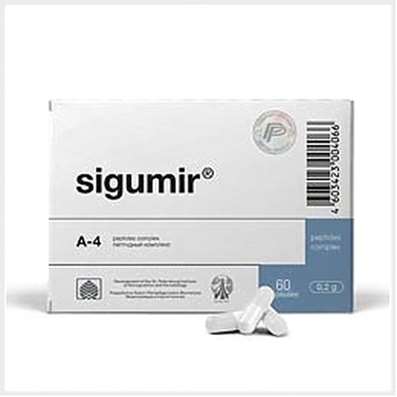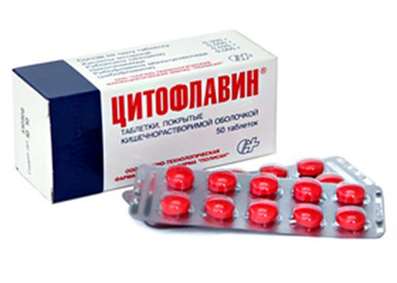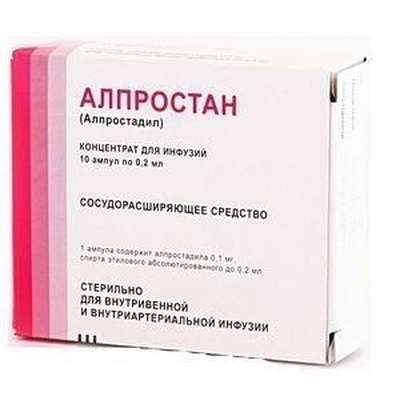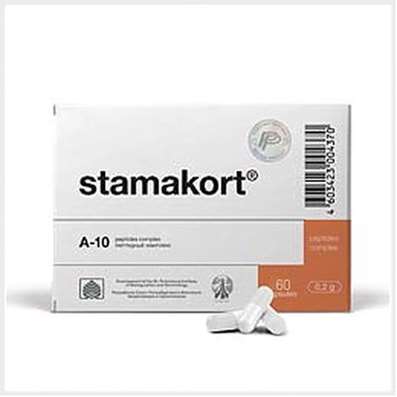Instruction for use: Neohepatect
I want this, give me price
Dosage form: Solution for infusion
Active substance: Immunoglobulinum humanum normale
ATX
J06BB04 Human immunoglobulin against hepatitis B
Pharmacological groups:
Human immunoglobulin against hepatitis B [Immunoglobulins]
The nosological classification (ICD-10)
Z20.5 Contact with a patient or the possibility of contracting viral hepatitis
Z24.6 The need for immunization against viral hepatitis: Hepatitis B
Composition
Solution for infusion 1 ml
Active substances:
Human plasma proteins 50 mg
of them:
Immunoglobulin G (IgG) at least 96%
Immunoglobulin A (IgA) not more than 2 mg
The content of antibodies against hepatitis B virus 50 IU
Distribution of subclasses of immunoglobulin G:
IgG1 - 59%; IgG2 - 35%; IgG3 - 3%; IgG4 - 3%
Auxiliary substances: glycine - 300 μmol; Water for injection - up to 1 ml
Description of dosage form
Colorless or light yellow, transparent or slightly opalescent liquid.
Pharmachologic effect
Mode action - antiviral, immunomodulating.
Pharmacodynamics
Neohepatect is an Ig preparation that is made from donor plasma, with a high titer of antibodies against hepatitis B.
The distribution of subclasses of IgG corresponds to the distribution in the plasma of healthy donors.
Pharmacokinetics
Bioavailability of human Ig against hepatitis B with infusion is 100%. The distribution between plasma and extravascular fluid occurs quickly enough, and in 3-5 days an equilibrium is achieved between the intravascular and extravascular space. T1 / 2 Neoheppetect is an average of 24 days. IgG and IgG complexes are utilized by the cells of the reticuloendothelial system.
Indications for the preparation Neohepatect
Prevention of hepatitis B in newborns born from mothers who carry the surface antigen of the hepatitis B virus;
Use in persons at increased risk of infection with hepatitis B virus before or simultaneously with vaccination against hepatitis B (including before surgery, repeated blood transfusion, hemodialysis);
Prevention of liver transplant infection in patients who have a surface antigen of the hepatitis B virus;
Prevention of hepatitis B:
- adults and children over the age of two who are not vaccinated against hepatitis B or who do not have documented evidence of vaccinations and the risk of contracting hepatitis B because of contact with material suspected of being infected (eg, if the integrity of the cutaneous Cover with a needle injection prick or direct contact with the mucous membrane).
The introduction of Neohepatekt is recommended to be carried out simultaneously with vaccination against hepatitis B (simultaneous active and passive immunization). The initial vaccination thus initiated should be continued for the following months in accordance with the instructions for the use of the vaccine.
The introduction of Neoheppetechet is not indicated if the patient who has been exposed to hepatitis is vaccinated in full and has a sufficient number of antibodies (at least 10 IU / L of serum). If the amount of antibodies to HBs antigen cannot be determined within 24 hours after contact with the contaminated material, then combined prevention (vaccine and Ig) is necessary in any case;
- in individuals whose antibody levels in the serum are less than 10 IU / L after 6 months after vaccination. Such patients should be given additional doses of hepatitis B vaccine concomitantly with the introduction of Neohepatect.
The use of Neoheppetect is indicated for those who require immediate prophylaxis of hepatitis B and who have a tendency to bleed simultaneously, since IM may lead to local hemorrhages.
Contraindications
Hypersensitivity to human Ig and other blood products, especially in rare cases of a deficiency in the blood of IgA and the presence of antibodies against IgA;
Hypersensitivity to other components of the drug.
Application in pregnancy and breastfeeding
The absence of risk of using this drug during pregnancy has not been studied in controlled clinical trials. Therefore, during pregnancy and lactation it should be used with caution, although a long experience of medical use of Ig does not allow expecting any harmful effect on the course of pregnancy, as well as on the fetus and the newborn.
Ig injections are excreted with human milk and may facilitate the transfer of protective antibodies to newborns.
Side effects
Possible side effects such as chills, headache, fever, nausea, vomiting, allergic reactions, aching joints and mild back pain.
In rare cases, an unexpected drop in blood pressure is possible, and in some cases - anaphylactic shock, even if the patient did not show excessive sensitivity during the previous administration.
With the introduction of human Ig, there were cases of the appearance of signs of aseptic meningitis and in rare cases - hemolytic anemia / hemolysis, transient skin reaction (rash or hyperemia), which completely disappeared after discontinuation of therapy.
In addition, there was an increase in serum creatinine and / or acute renal failure.
Single cases of thromboembolic reactions in elderly patients, with signs of cerebral or cardiac ischemia, as well as in patients with excessive body weight or silt
Interaction
Do not add any other drugs to the solution of Neohepatecht, as. A change in the electrolyte concentration or a pH value can lead to precipitation or denaturation of the protein.
Attenuated (attenuated) live vaccines: the administration of Ig can adversely affect the life of vaccines against viral diseases such as measles, rubella, mumps and chicken pox from 6 weeks to 3 months.
Vaccination with a weakened live vaccine should be given no earlier than 3 months after the administration of this drug. In the case of measles vaccination, the effect of Ig can last up to 1 year. Patients who need to be vaccinated against measles should first be examined for specific antibodies.
Laboratory research. After the introduction of Ig, a temporary increase in the titer of various passively introduced antibodies is possible, which can lead to false-positive analysis results in a serological study.
Passively introduced antibodies against erythrocyte antigens (eg A, B, D) can affect serological parameters such as alloantibodies to erythrocytes (eg Coombs reaction), the number of reticulocytes and haptoglobin.
Dosing and Administration
IV, by infusion. The initial infusion rate should be 0.1 ml / kg body weight / hour. If the drug is well tolerated after 10 minutes after the onset of administration, the rate can be gradually increased to 1 ml / kg body weight / hour.
Patients belonging to the risk group, especially the elderly, to patients with impaired renal function, Neohepatect should be administered at a minimum rate.
The clinical experience of the use of Neoheppetect in newborns born from mothers - carriers of HBs-antigen showed that the drug in a dose of 2 ml, administered for 5-15 minutes, is well tolerated.
Do not mix Neohepatect with other drugs.
Before the introduction of the Neoheppetechet, it is necessary to visually check the contents of the vial. The solution should be clear or slightly opalescent. An opaque or precipitating solution should not be used.
Before administration, the preparation should be warmed to room temperature or body temperature.
The preparation is not subject to preliminary dilution.
Do not add any other drugs to the solution of the Neoheppetect.
The vial should be used immediately. Due to the risk of bacterial contamination, the unused residue of the drug is not subject to storage.
Recommended dosage of the drug
If nothing else is assigned, the following is recommended.
For the prevention of hepatitis B in neonates whose mothers are infected with the hepatitis B virus, immediately after birth, single-dose Neohepatekt is administered at a dose of 20-50 IU / kg body weight, but not less than 100 IU (2 ml). Urgent vaccination against hepatitis B is recommended. The first injection of the vaccine can be carried out on the same day as the injection of Neohepatect, only in different parts of the body.
After contact with a material that is suspicious of the content of the hepatitis B virus, immediately, at least 72 hours later, Neohepatect at a dose of 8-10 IU / kg body weight (0.16 to 0.20 ml) is administered once.
For prevention, with a high risk of hepatitis B infection (for example, in hemodialysis units), Neohepatekt is injected once at a dose of 7 IU / kg body weight (0.14 ml), but not less than 10 ml, after the determination of HBsAg and antibodies to HBs.
If the titer of antibodies to HBsAg is more than 10 IU / l in a month (including for simultaneous active immunization), immediate administration of Neogepatect is not required, and it is carried out after 2 months.
The introduction of Ig at the existing risk of infection is repeated if necessary at intervals of 1 month with a monthly control of the titer of antibodies to HBsAg. After the active formation of antibodies to HBsAg, passive administration of antibodies is no longer necessary.
To prevent infection of liver transplant in HBsAg-positive recipient, I / O is injected during the operation after removal of the liver and before transplantation of a new liver 10,000 IU (200 ml) of Neogepatect. After the operation, the drug is administered at least 7 days daily in a dose of 2000 IU (40 ml). With prolonged therapy in serum, a minimum of 100 IU / L (monthly monitoring) should be maintained. The duration of therapy should be at least 6 months.
The recommended dosages are based on the results of clinical studies.
Overdose
Overdose of the drug in patients at risk, especially in elderly people, as well as in patients with impaired renal function, can lead to hypervolemia (increased BCC) and increased blood viscosity.
Precautionary measures
Certain severe side effects may depend on the speed of administration of the drug. Since the tendency of growth of undesirable phenomena is associated with an increase in the rate of drug administration, the rate of administration recommended in the section "Dosing and Administration" should be observed.
The patient should be under medical supervision throughout the infusion and after it for at least 20 minutes to monitor the possible appearance of symptoms of side effects.
Certain side effects can occur more often:
- at a high rate of administration;
- in patients with complete and partial immunodeficiency both in the presence and in the absence of IgA deficiency;
- in patients receiving human Ig for the first time, or (in rare cases) when switching to another Ig preparation, or if Ig treatment was performed for a long time.
Hypersensitivity reactions in pure form occur in extremely rare cases, in which there is no IgA in the blood and antibodies to IgA are formed.
In most cases, possible complications can be avoided:
- if you make sure that the patient does not show allergic reactions to human Ig, first injecting Neohepatect very slowly (0.1 ml / kg / h);
- if you carefully observe during the introduction of the drug for the patient and monitor the appearance of signs of undesirable effects. Particular care should be taken to monitor the possible appearance of side effects in patients who have never previously received human Ig, or who have received other Igs to date, or if Ig have been administered for a very long time. The condition of such patients should be observed throughout the infusion and at least 1 hour after the end. All other patients should be monitored for at least 20 minutes after the administration.
Patients with Ig administration very rarely have cases of acute renal failure. In most cases, this side effect occurred in patients with additional risk factors: renal dysfunction, diabetes mellitus, reduced BCC, overweight, taking drugs that have a nephrotoxic effect, and age over 65 years.
In the treatment of Ig for all groups of patients it is necessary:
- consume a sufficient amount of fluid before the Ig infusion;
- monitor diuresis;
- monitor the serum creatinine content (indicator of kidney function);
- To exclude simultaneous reception of diuretics.
In the event of a negative effect on kidney function, consideration should be given to stopping Ig administration.
The most common violation of kidney function and acute renal failure is associated with the use of Ig preparations containing sucrose as a stabilizer. Therefore, patients with any risk factor are encouraged to use Ig that do not contain sucrose (eg, Neohepatect). In addition, the drug should be administered at the lowest rate of administration.
Influence on the ability to drive a car or perform work that requires an increased speed of physical and mental reactions. There is no indication that immunoglobulins can affect the ability to drive or serve machinery.
Additional Information
When using drugs from human blood or plasma due to the transmission of infectious agents, infection by the latter cannot be completely ruled out. This also applies to pathogens that are still unknown in nature. To reduce the risk of transmission of pathogens, donor criteria are selected according to strict criteria, donor plasma is tested and selected and the pool of plasma is monitored.
The stages of elimination and / or inactivation of pathogens are included in the production process.
For the production of the Neogepatect, exclusively plasma of healthy donors is used, in which antibodies to HIV of type 1 and 2, hepatitis C virus and surface antigen of hepatitis B virus were not detected.
In addition to individual plasma testing of individual donors, miniipules (PCR testing for HIV, hepatitis A, B and C viruses, paravovirus B19) are first monitored, and then a production pool of plasma processed for Neohepatekt (repeated testing for antibodies to HIV type 1 and 2, hepatitis B and C, as well as PCR for HIV, hepatitis B and C viruses). In production, a pool of plasma is used only with negative test results.
Neohepatekt is made by fractionating ethanol in the cold. For inactivation and elimination of possible viruses, treatment with tri-n-butyl phosphate / tween 80 and octanoic acid precipitation is carried out.
The prescribed methods of virusinactivation, validated using model viruses, are effective against the causative agents of AIDS and hepatitis B and C.
Release form
By 2, 10, 40 ml in bottles of colorless glass, sealed with a stopper with an aluminum cap.
On 1 fl. In a cardboard box with instructions for use.
Manufacturer
BIOTEST PHARMA GmbH. Landsteiner Straße, 5.D-63303 Dreieich, Germany.
Conditions of supply of pharmacies
On prescription.
Storage conditions of the drug Neohepatect
In the dark place at a temperature of 2-8 ° C (do not freeze).
Keep out of the reach of children.
Shelf life of the drug Neohepatect
2 years.
Do not use after the expiry date printed on the package.

 Cart
Cart





